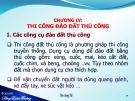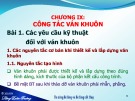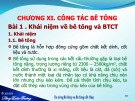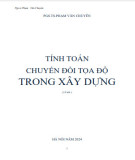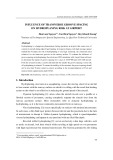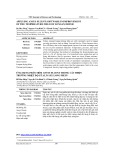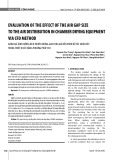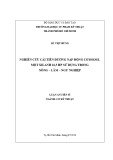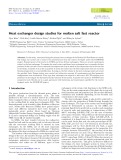
Journal of Science and Technique - ISSN 1859-0209
75
INFLUENCE OF TRANSVERSE GROOVE SPACING
ON HYDROPLANING RISK AT AIRPORT
Huu Lam Nguyen1,*, Van Hieu Nguyen1, Duy Khanh Duong1
1Institute of Techniques for Special Engineering, Le Quy Don Technical University
Abstract
Hydroplaning is a dangerous phenomenon during operations at airports that causes loss of
control of aircraft during takeoff and landing. In tropical climates with high average annual
rainfall like Vietnam, the risk of hydroplaning is very high. Currently, the commonly used
solution is to cut transverse grooves on the runway surface. To evaluate the influence of
groove spacing on hydroplaning, the article uses CFD simulation with Ansys Fluent software
to determine the impact of groove spacing for 2 cases of A350-900 and A321-200 aircraft.
From the research results, it can be affirmed that the smaller the groove spacing is more risk
of hydroplaning is reduced. To ensure the stability of the structure, the groove spacing should
not be less than 38 mm (center-to-center) according to the recommendations of FAA and
many aviation organizations under ICAO.
Keywords: Hydroplaning; runway; airport; Ansys Fluent; CFD; transverse groove.
1. Introduction
Hydroplaning, also known as aquaplaning, causes the moving wheel of an aircraft
to lose contact with the runway surface on which it is rolling with the result that braking
action on the wheel is not effective in reducing the ground speed of the aircraft.
- Dynamic hydroplaning [1]: arises when the aircraft travels over a puddle or a
flooded section of pavement, causing completely separate the aircraft tires from the
runway pavement surface. Most researchers refer to dynamic hydroplaning as
hydroplaning, as it is the most commonly encountered form on runways.
- Visco hydroplaning [1]: occurs specifically on surfaces with minimal microtexture.
In such cases, a thin fluid layer persists between the tire and the pavement due to the lack
of microtexture to disrupt it. Unlike dynamic hydroplaning, which is speed-dependent,
viscous hydroplaning can happen at any speed and with any fluid film depth.
- Reverted rubber hydroplaning [1]: occurs exclusively when large vehicles, such
as trucks or aircraft, lock their wheels while traveling at high speeds on wet pavements
with high macrotexture but minimal microtexture. The friction generated by the sliding
* Corresponding author, email: nguyenhuulam1995@lqdtu.edu.vn
DOI: 10.56651/lqdtu.jst.v7.n02.889.sce





